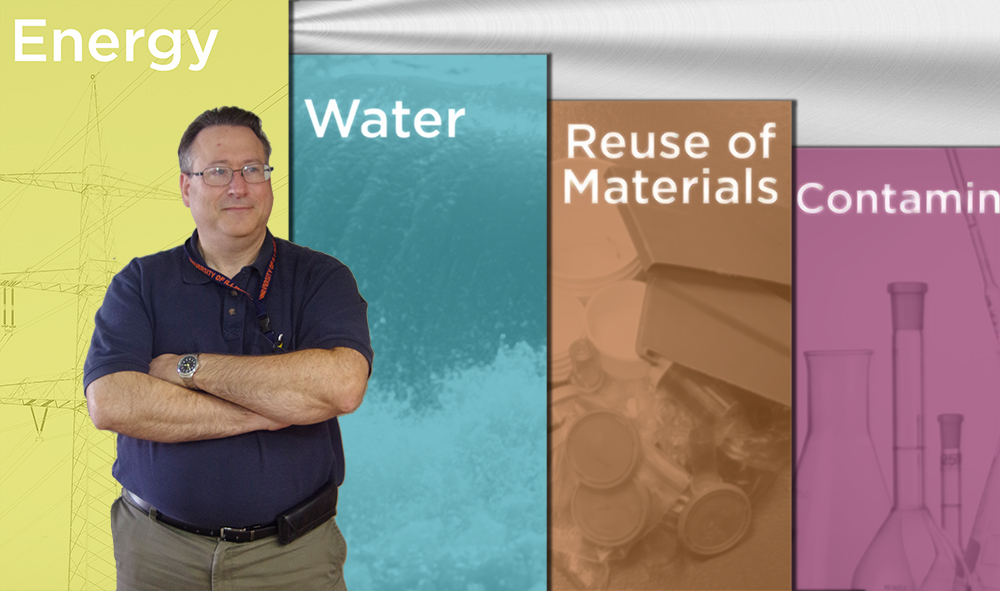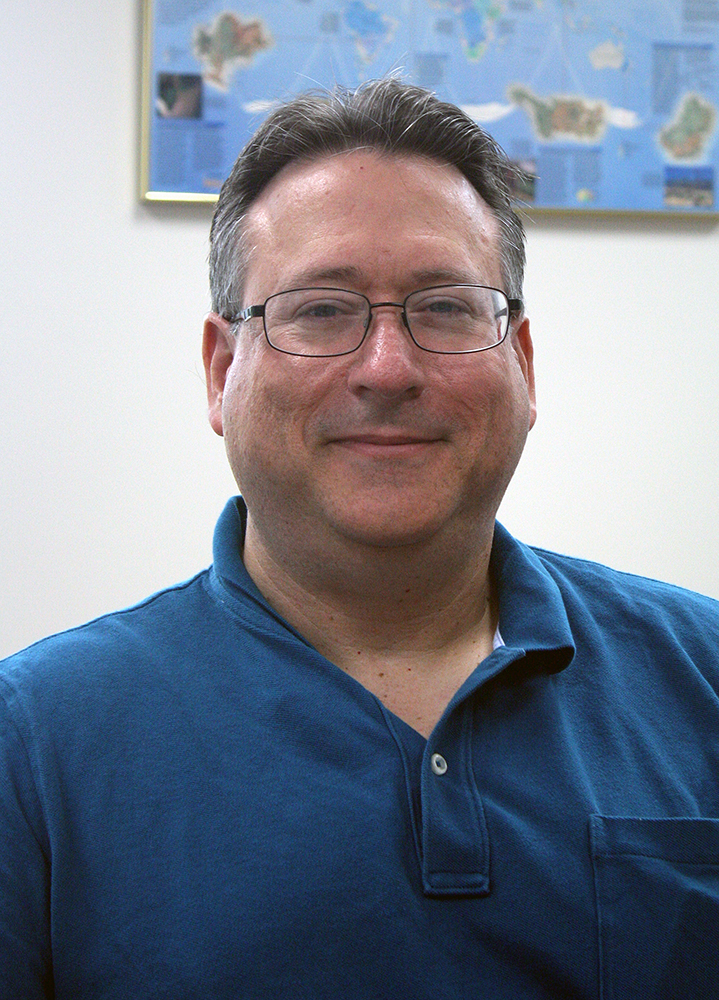
Steve Cosper is in the middle of a busy sabbatical year collaborating with Illinois Sustainable Technology Center (ISTC) researchers on a range of projects of mutual benefit spanning energy, water, and waste issues. It is the latest highlight of a closer relationship between the Prairie Research Institute (PRI) and the Army’s major research center in Champaign.

 The Construction Engineering Research Laboratory (CERL), a division of the U.S. Army Corps of Engineers’ Engineer Research and Development Center (ERDC), has paired with ISTC on several research projects over the years but it wasn’t until about two years ago with the arrival of ISTC’s current director, Kevin O’Brien that the relationship deepened.
The Construction Engineering Research Laboratory (CERL), a division of the U.S. Army Corps of Engineers’ Engineer Research and Development Center (ERDC), has paired with ISTC on several research projects over the years but it wasn’t until about two years ago with the arrival of ISTC’s current director, Kevin O’Brien that the relationship deepened.
Last week, Cosper and ISTC Research Scientist Lance Schideman were invited to participate in workshop on water/wastewater and solid waste management at the National Defense University in Washington DC. The Department of Defense (DOD)-United Nations Technology Workshop was organized in response to a Presidential guidance to the Defense Department to support UN Peacekeeping operations around the world with DOD experience to enhance their effectiveness and environmental impacts.
In just six months at ISTC, Cosper has already developed many strong relationships with ISTC scientists, which have resulted in over five proposals for potential joint research.
Collaborations with the following ISTC researchers include:
- Rupa Ganguly – A proposal to the U.S. Army on energy efficiency at wastewater treatment plants at military installations
- Lance Schideman –
- A proposal to the U.S. Army for hydrothermal gasification of wastewater (a waste to energy concept)
- A DOD workshop on sustainable approaches to utility services, which may be shared with the United Nations for use at their camps for Peacekeepers
- B.K. Sharma –
- A proposal to the DOD on the conversion of agriculture plastics to liquid fuel and electricity
- A technology demonstration to the DOD coupling Cosper’s novel solid waste gasification technology (learn more via factsheet or webinar) to a Stirling external combustion engine to create electricity from solid waste
- Nancy Holm – A white paper on legacy PCBs (polychlorinated biphenyls) in solid building materials, paints, and caulks that accurately and concisely discusses warning signs and solutions.
“ISTC’s expertise and current research is relevant to the challenges that CERL is working on,” said Cosper. ISTC’s B.K. Sharma has helped Cosper deepen his knowledge of various waste-to-energy processes including pyrolysis of different waste materials and ISTC’s Lance Schideman introduced Cosper to a two-stage anaerobic digestion process being developed at ISTC labs. In addition, ISTC’s connections to University of Illinois researchers and Illinois-based private companies have expanded Cosper’s reach in Illinois, who usually conducts research outside of Illinois.
Through a sabbatical program with ERDC and with permission from the University, Cosper is taking a one-year (Feb. 2016 to Feb. 2017) sabbatical to learn more about the Institute’s research and develop collaborative research projects. “Our missions for sustainability research have a lot in common and we can teach each other a great deal,” said Cosper.
His research interests are in applied research in solid waste, contaminants in construction materials, recycling construction materials; environmental surveys at Army industrial sites; and technical assistance to public works staff at Army installations and headquarters agencies.
 Cosper earned his BS in civil engineering at the University of Illinois at Urbana-Champaign in 1990 and his masters in environmental science at Indiana University at Bloomington in 1992. He has been an environmental Engineer at CERL for the past 22 years.
Cosper earned his BS in civil engineering at the University of Illinois at Urbana-Champaign in 1990 and his masters in environmental science at Indiana University at Bloomington in 1992. He has been an environmental Engineer at CERL for the past 22 years.
“With so much synergy between ISTC and CERL there are many opportunities for collaboration between them and I look forward to fostering their relationship even after I go back to CERL in February,” he said.

